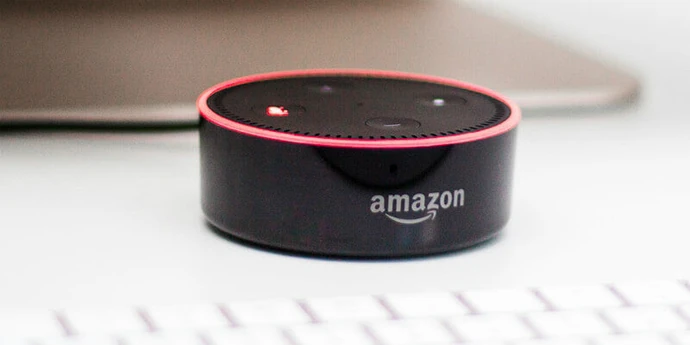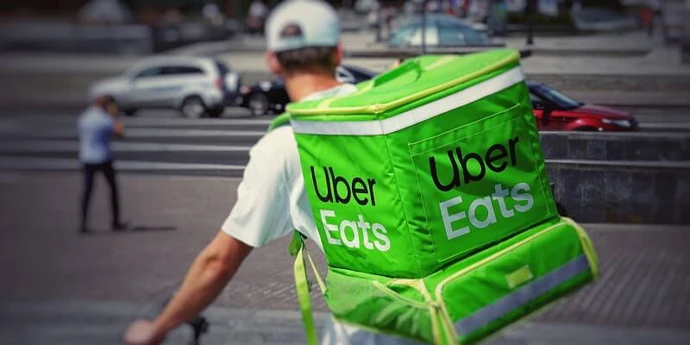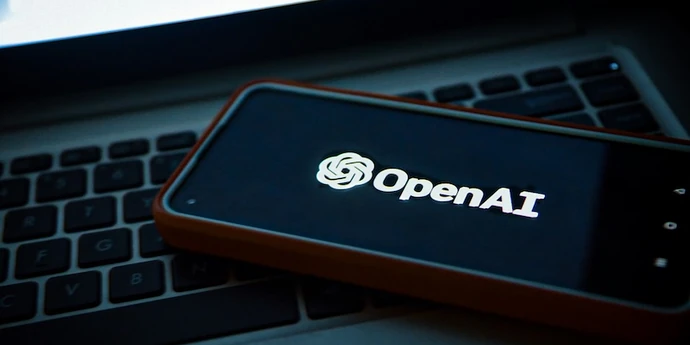If you’re interviewing for a PM role at top tech companies such as Meta, Uber, Coinbase, and others, the product sense interview is one of the interviews you’ll need to crack.
With challenging, open-ended questions on different aspects of product sense such as product design, improvement, and strategy, you’ll need to prepare as extensively as you can.
To help you, we’ve created this guide to give you everything you need to know to prepare for the product sense interview. Here you’ll find top tips from expert PM coaches, an introduction to an answer framework, example questions, and more resources to help you with your prep.
- What is product sense?
- What is a product sense interview?
- 10 ways to demonstrate product sense
- How to answer product sense questions
- Product sense mock interview videos
- How to prepare for the product sense interview
Ready? Let’s get started!
Click here to practice 1-on-1 with a product interview expert
1. What is product sense?
Product sense has an intangibility to it. Talk to ten experienced PMs, and you’ll probably get ten contrasting definitions of what it is.
As we see it, product sense boils down to the following:
- Good product understanding
- The right instincts for products that meet user needs and fulfill business objectives
- Awareness of the different factors and considerations at play, and
- Enough creativity to breed innovation.
The term ‘product sense’ makes it sound like it’s something innate, but it’s just like any skill. You can definitely develop product sense with enough research and real-world experience.
2. What is a product sense interview?↑
In a product sense interview, you will typically be given 45 minutes to design a new product or improve an existing one. Product sense interviews are designed to evaluate how you work to understand common product challenges and how you identify the best way to approach them.
Many experienced PMs will say that the product sense interview is the most crucial of all the interviews you’ll face as a PM candidate.
“Product sense interviews are the most important part of a PM interview because top tech companies really want to assess your ability to ideate, design, and improve products.” Mark, ex-Meta and Google PM turned coach.
“Product sense interviews are very reflective of what the PM job is about, which very generically is about figuring out what to build and why.” Ex-Meta and Doordash PM interviewer Khalid.
This is why you’ll find that many top companies including Meta, Stripe, Airbnb, Coinbase, Doordash, Lyft, and Uber have product sense interviews for the PM role. Google also has what it calls ‘product insight interviews’ which are quite similar.
During product sense interviews, interviewers are essentially looking for you to demonstrate structured thought and communication, user empathy, methodical and reasoned approach, and analytical thinking, with bonus points for creativity
In addition to the above skills, you’ll stand out as a PM candidate if you showcase the following, according to current Meta Senior Product Manager and coach Lavina: "The ability to bring structure to ambiguity, lead with confidence, and ask the right questions, strategic insight, and business acumen."
2.1 What questions to expect during product sense interviews
The product sense interview is an umbrella term that encompasses three types of questions: product design, product improvement, and product strategy.
Below we’ve gathered some typical examples per category which you can use to practice. And then later, in section 4, you’ll find a useful framework to use when answering product sense questions.
2.1.1 Product design interview
Product design questions will ask you to design a new product from scratch. They're to test if you can combine a strong eye for design and UX with an understanding of business objectives.
Product design example questions
- Design a pen for an astronaut.
- Design an umbrella for kids.
- Design a phone for deaf people.
- Design a bike-based delivery service.
- Design a grocery app.
Click here to dive deeper into product design interview questions.
2.1.2 Product improvement interview
Product improvement questions are testing the same thing as product design questions, but instead you'll be asked how you'd improve an existing product.
Favorite product questions usually fall under this category.
Product improvement example questions
- How would you improve LinkedIn's user profile page?
- How would you improve engagement in Trello?
- How would you improve Google Chrome?
- Pick your favorite app. How would you improve it?
- How would you improve Google Image search?
- How would you improve coffee machines used in offices?
Click here to dive deeper into product improvement interview questions.
2.1.3 Product strategy interview
Product strategy questions come from a more high-level perspective. They test your ability to understand competitive markets and to create a product roadmap that responds to the business strategy of the company you’re applying to.
Product strategy example questions
- How would you monetize Facebook Messenger?
- Imagine you’re a PM at a startup that works with big data from the NFL — what’s the first product you would ship?
- How would you sell live plants at Amazon?
- How would you bootstrap a product that helps people find apartments?
- Imagine you’re the CEO of Apple — what product would you eliminate from the lineup?
- If you were the CEO of LEGO, what new product line would you come up with to increase revenue?
Click here to dive deeper into product strategy interview questions.
3. 10 ways to demonstrate product sense↑
As we’ve mentioned above, your PM interviewer will be looking for good product understanding, the right instincts, awareness of the different factors and considerations at play, and enough creativity to breed innovation. If you’ve got all these things, you’ve got product sense.
To convince the interviewer that you possess these qualities, here are 10 ways you can demonstrate product sense in your interview:
3.1 Use a framework
You’ll need to show you can approach complex problems methodically, always keeping your original goal in mind. Have a framework to structure your thought process, and talk your interviewer through it step-by-step.
In section 4, we’ll be showing you a good structure to use when answering product sense questions. But you can develop your own or find another that suits you.
3.2 Break the problem down into pieces
Questions such as "How would you improve Facebook?" covers such a wide scope, that they’re impossible to properly answer given a limited interview time, unless you break them down into smaller components. Your framework will help you here.
3.3 Understand completely the problem you are solving and why
PM interviewer Khalid advises, “Be very clear on ‘what problem are we solving and why’. If you can focus on nailing this and delivering a clear message here, the rest will naturally cascade.”
The problem is your North Star, and the design choices you make should take you toward it. In some sense, understanding the problem is more important than the solution itself.
3.4 Empathize with users
To make the right product decisions, you’ll have to understand who your users are, how to segment them, and how to target the right ones.
Khalid advises that you should always start with the customer. Defining user pain points will help you identify the right direction when answering product sense questions.
3.5 Talk about trade-offs
There will be numerous approaches and solutions to the problem the interviewer poses, and you’ll have to make tough choices. This is meant to test you on your ability to prioritize options through logical reasoning, which is a crucial skill PM candidates should possess.
“Candidates should be able to articulate the prioritization criteria and then logically apply it to the context of the conversation.” Or, Ex-Coinbase PM interviewer.
3.6 Know your metrics
While a product sense interview isn’t as metric-focused as an analytical thinking /execution interview, you’ll still need to give a strong explanation of how you’re going to measure success.
3.7 Turn ambiguity into specifics
It’s not enough to just have an interesting discussion with the interviewer. You’ll need to turn ideas into specific product solutions.
Another note about ambiguity: Khalid says that you should consider any ambiguous word in the question you get as a hint for clarification. His advice is to listen closely to the question and make sure you understand what is being asked. It may seem simple at face value, but it’s an incredibly important first step that many candidates take for granted.
3.8 Balance creativity, innovation, and practicality
Showing a structured, coherent approach is only half the battle: try to offer creative, innovative solutions that go beyond the obvious. But also, don’t forget the practical and long-term side of things.
"The solution you offer should not only address the immediate issues but also deliver lasting strategic value to the business. Your answer should always be situated within a broader strategic and market framework." PM coach Lavina
3.9 Think at scale
To state the obvious, if you’re applying to a top tech company, you’ll know that the company is huge, with products that are used by tons of people. So as you outline your answer, make sure you’re thinking big.
3.10 Treat your interviews like a conversation
“Think of the interview as two colleagues working on a problem together. So have a back and forth, think out loud, and consider what feedback is being given.” PM interviewer Khalid.
While you should prepare and practice your answers well in advance, you should resist the urge to memorize your answers. “Companies are looking for candidates who can communicate in a natural and conversational manner so it doesn't sound too scripted.” PM interviewer Or.
4. How to answer product sense questions (framework)↑
The best way to present your answers to product sense questions is by using a framework. PMs use frameworks all the time for a reason–they help you follow a logical process and establish some order in what is often a chaotic environment.
So in your product sense interview, don't keep your framework a secret. Share it with the interviewer so they know you've structured your thought process and can follow it with you.
We recommend structuring your answer with the BUS framework, although there are plenty of other valid frameworks to choose from (you can even make up your own).
To illustrate the framework, we’ll be using a product design question, but you can easily adapt this for product improvement questions. To use it for product strategy questions, you’ll just have to remove the user problems.
The BUS framework
The BUS framework is a three-step approach to the product process.
- Business objectives
- User problems
- Solutions
The main benefit of using the BUS framework is that it forces you to approach problems in a logical order: you only start considering solutions when you’ve first established the business objectives and have found a relevant problem that is impacting them.
It’s no good providing a solution to a problem if you can’t link it back to how this helps meet your business objectives. It also makes it easy to pivot at any moment of the interview without losing your focus.
Let’s go through each step:
Step 1: Business objectives
Many candidates skip this step and start listing ideas in an unstructured way. This is a big red flag for interviewers.
Here are the things you need to do before starting to think about user problems and how to solve them:
- Outline your answer.
- Define the business objective.
#Outline your answer
First, you should lay out your approach to solving the question. You could say something like, "First, I'm going to try to understand the business situation and our objective in more detail. Second, I will focus on defining the target user and brainstorming what problems we could solve for them. And third, I will generate solutions for these problems, prioritize them, and make a recommendation."
Outlining your answer shows you've got strong communication skills. If you jump straight in and answer the question in an unstructured way, it will be very hard for your interviewer to keep up with you.
#Define the business objective
Second, you need to clarify the business situation and objective. Knowing the business context and what it's trying to achieve will help you make better design decisions later on. This is particularly important if the question your interviewer asks is vague.
For instance, let's imagine your interviewer wants you to "Design a phone." Then you might want to ask what the specific business objective is that we are trying to fulfill (e.g. sell as many phones as possible with a low price point, go for the premium market, etc.); and if we already have a user in mind for the phone (e.g. business users, teenagers, etc.).
You'll design completely different phones depending on the answer to these questions.
Step 2: User problems
Now that you know more about the business situation and objectives, it's time to think about the users and their problems in greater detail. Here are the things you need to do in that step:
- Select a user type.
- List user problems.
- Prioritize user problems.
#Select a user type
First, you should identify the different types of users for your product, and you should select one to focus on.
Going back to our phone example, with the business objective to focus on an underserved market, you could suggest focusing on: hard of hearing users, visually impaired users, elderly users, users with mobility issues, etc. List these different users and select one with your interviewer.
Note that you can skip this part of the discussion if your interviewer has already specified a type of user they want to focus on in their initial question.
It's also helpful to remember that for some products, the user and the customer are not the same person. For example, that's the case for games that parents buy for their kids, or software (e.g. Jira) that managers buy for people in their teams.
#List user problems
Second, once you've got a target user, you should think through what problems you can solve for them. An easy way to do this is to imagine them using the existing product or service you're trying to replace.
For instance, let's imagine we are focusing on hard of hearing users. What are the problems they are facing with current phones? Here are some examples:
1) can't hear the phone ringing
2) can't hear the other person talking on the line
3) can't listen to voicemails
4) can't hear app notifications
5) can't hear the sound on videos received from friends, etc.
#Prioritize user problems
Third, you should prioritize one to three items from the list of problems you have created. It's common to prioritize based on how painful that problem is for the user.
For instance, you could say something like, "My suggestion is to focus on solving problems one and two because those are the two features that really define a phone and they are currently inaccessible to hard of hearing people."
Step 3: Solutions
Once you've defined the user problems you are trying to solve, it's time to generate some solutions. Here's how to do it:
- List solutions.
- Prioritize solutions.
- Summarize.
#List solutions
First, for each of the user problems you have identified, you should generate potential solutions.
Let's do this for user problem 1: hard of hearing users can't hear their phone ringing. You could build a phone that does any of the following things when ringing: rings for longer than standard phones to give more time to pick up, flashes bright colors on the screen, vibrates really strongly, is connected to a vibrating wristband/watch, sends visual notifications to other connected devices such as laptops, TVs, connected light bulbs, etc.
At this stage, it's helpful to draw a table with two columns on a piece of paper or a whiteboard. The first column should contain the user problems you have decided to focus on. The second column should contain solutions for each problem.
#Prioritize solutions
Once you've generated a few ideas, it's time to prioritize the ones you will recommend building. A common way of doing this is to grade each solution from 1 (low) to 3 (high) based on how much value they would deliver for the user, and how easy they are to implement.
You will need to do this for each of the user problems that you identified in step 2. Don’t forget to address the trade-offs of your solution (e.g. a vibrating wristband would require users to pay for additional hardware).
#Summarize
Finally, after going through that exercise, it's a great idea to state the initial question again and summarize what product you suggest building and why. This summary is a simple way of telling your interviewer that you are done answering the question. And again, it's an efficient way of showing you've got great communication skills.
Now that you’ve got a solid understanding of how to use the BUS framework (or your framework of choice), you’ll want to start putting it into practice.
You can go back to the example questions in section 2 and try crafting your answers. Or if you want to see it in practice, read on and watch the product sense mock interviews below.
5. Product sense mock interviews↑
If you’re nervous about product sense interviews, you can calm your nerves by familiarizing yourself with them. One good way to do this is by watching product sense mock interviews.
Below we’ve gathered some excellent mock interview videos. Pause the videos throughout so that you can construct your own answers and see how they compare.
Product design mock interviews
- Design a fitness app for Meta (by IGotAnOffer)
- Design an experience for Facebook around movies (by Exponent)
- What would you build in the travel space? (by Dianna Yau)
Product improvement mock interviews
- How would you improve Google Chrome? (by IGotAnOffer)
- What’s your favorite product? (by IGotAnOffer)
- Improve Instagram stories (by Exponent)
Product strategy mock interviews
- Imagine you're CEO of Uber: What would your 10-year strategy be? (by IGotAnOffer)
- Think through the use cases and strategy for a teleportation device (by Product Alliance)
- If Amazon launched unlimited free photo storage, how would Google respond? (by Exponent)
6. How to prepare for product sense interviews↑
We've coached more than 15,000 people for interviews since 2018. There are essentially three activities you can do to practice for interviews. Here’s what we've learned about each of them.
6.1 Practice by yourself
Of course, first of all, you'll need to take time to practice building your answers within your chosen framework. We recommend you start by doing this on paper. Use the example questions in this article and if you want more questions to work with, check out the following guides:
- Meta product sense questions (applicable to general product sense interviews)
- How to crack product strategy questions
- How to crack product design interview questions
- How to crack product improvement questions
Once you’re in command of the subject matter, you’ll want to practice answering questions. But by yourself, you can’t simulate thinking on your feet or the pressure of performing in front of a stranger. Plus, there are no unexpected follow-up questions and no feedback.
That’s why many candidates try to practice with friends or peers.
6.2. Practice with peers
If you have friends or peers who can do mock interviews with you, that's an option worth trying. It’s free, but be warned, you may come up against the following problems:
- It’s hard to know if the feedback you get is accurate
- They’re unlikely to have insider knowledge of interviews at your target company
- On peer platforms, people often waste your time by not showing up
For those reasons, many candidates skip peer mock interviews and go straight to mock interviews with an expert.
6.3 Practice with ex-interviewers
In our experience, practicing real interviews with experts who can give you company-specific feedback makes a huge difference.
Find a product manager interview coach so you can::
- Test yourself under real interview conditions
- Get accurate feedback from a real expert
- Build your confidence
- Get company-specific insights
- Learn how to tell the right stories, better.
- Save time by focusing your preparation
Landing a job at a big tech company often results in a $50,000 per year or more increase in total compensation. In our experience, three or four coaching sessions worth ~$500 make a significant difference in your ability to land the job. That’s an ROI of 100x!















